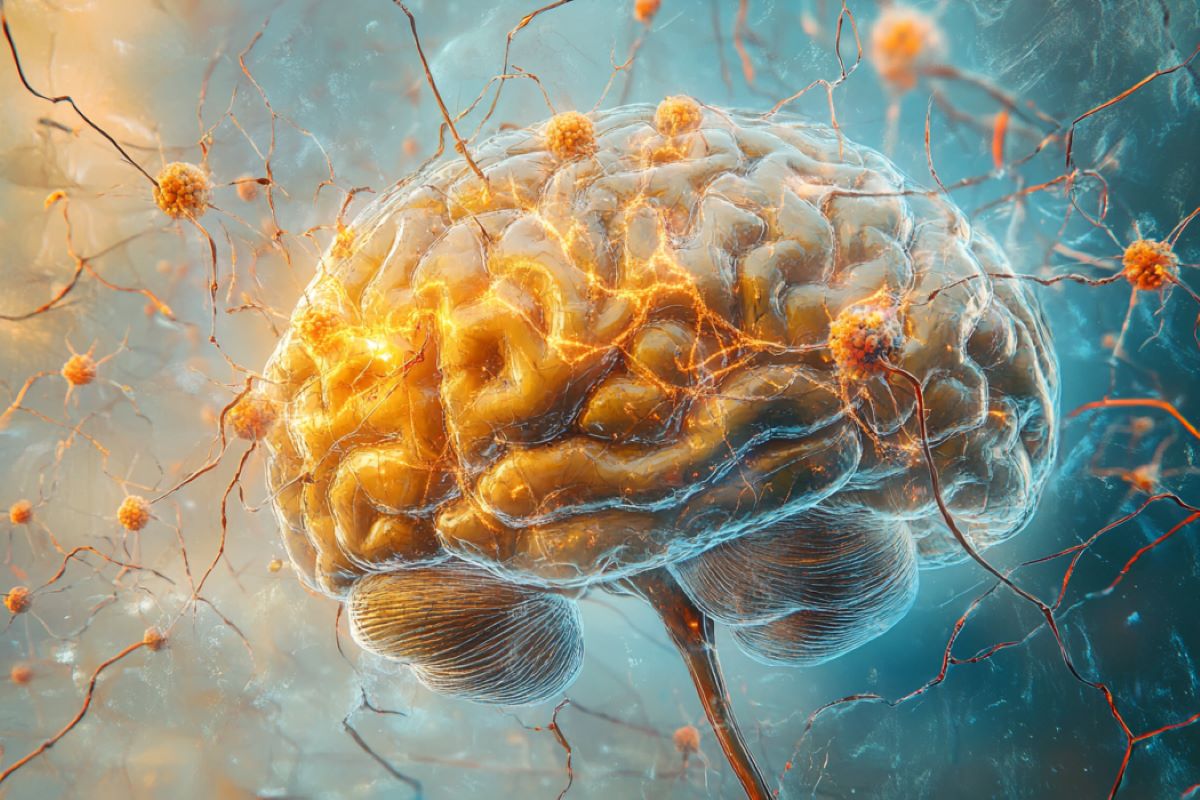Summary: Anti-NMDAR encephalitis, a rare autoimmune disease, can cause extreme psychiatric symptoms such as hallucinations, paranoia, and memory loss, often mimicking bipolar disorder or schizophrenia. This condition, often affecting women in their 20s to 30s, results from antibodies attacking brain receptors essential for cognition and memory.
New research reveals varying antibody binding patterns on these receptors, which may account for differences in symptoms among patients. This discovery underscores the potential for personalized treatments, allowing for more targeted and effective therapies in managing this underdiagnosed disease.
Key Facts:
- Anti-NMDAR encephalitis causes psychiatric symptoms, often mimicking schizophrenia.
- Antibody binding patterns on brain receptors vary, influencing symptom presentation.
- Findings highlight the need for personalized treatments for this rare autoimmune disease.
Source: CSHL
Imagine you wake up in a hospital without a single memory of the last month. Doctors say you had a series of violent episodes and paranoid delusions. You’d become convinced you were suffering from bipolar disorder. Then, after a special test, a neurologist diagnoses you with a rare autoimmune disease called anti-NMDAR encephalitis.
This is what happened to Susannah Cahalan, a New York Post reporter who would go on to write the best-selling memoir Brain on Fire: My Month of Madness.
Anti-NMDAR encephalitis can lead to hallucinations, blackouts, and psychosis, says Cold Spring Harbor Laboratory Professor Hiro Furukawa.

It mostly affects women ages 25 to 35—the same age at which schizophrenia often presents itself. But what’s happening in anti-NMDAR encephalitis is something else.
Furukawa specializes in NMDARs, brain receptors that play a critical role in cognition and memory.
“In anti-NMDAR encephalitis, antibodies bind to those receptors and prevent them from working,” he explains. As an autoimmune response, the brain becomes inflamed—hence, Brain on Fire.
While some treatments are available, their effectiveness varies depending on symptom severity. New research from the Furukawa lab may explain why. In a recent study, Furukawa and colleagues map how antibodies from three patients bind to NMDARs.
They find that the way in which each of the three antibodies binds to NMDARs differs. The discovery marks an important step in gaining a fuller understanding of anti-NMDAR encephalitis, a condition first diagnosed in 2008. Furthermore, it suggests personalized medicine may be critical for treating this disease.
“Distinct binding patterns manifest in different functional regulation levels in NMDARs,” Furukawa explains.
“This affects neuronal activities. So, different binding sites may correspond to variations in patients’ symptoms.”
Uncovering those correlations could lead to more precise therapeutic strategies. Imagine, for example, that scientists identify several binding sites common among encephalitis patients.
Pharmacologists could then design new drugs to target these sites. But that’s not all. Personalized medicine could also mean more accurate diagnoses, Furukawa says.
“It’s still a rare disease, but it could be misdiagnosed or underdiagnosed. Therefore, we need to spread awareness. Could, for example, some schizophrenic patients have this disease? Could it be caused by antibodies?”
Currently, it’s said that anti-NMDAR encephalitis affects one in 1.5 million people. Yet, in time, we may find it’s more common than previously assumed. That’s a scary thought.
However, it could explain why existing psychiatric medicine does not work for some people diagnosed with bipolar disorder and other mental health conditions—a huge revelation for patients as well as the families and therapists who care for them.
About this neurology research news
Author: Sara Giarnieri
Source: CSHL
Contact: Sara Giarnieri – CSHL
Image: The image is credited to Neuroscience News
Original Research: Closed access.
“Structural and functional mechanisms of anti-NMDAR autoimmune encephalitis” by Hiro Furukawa et al. Nature Structural & Molecular Biology
Abstract
Structural and functional mechanisms of anti-NMDAR autoimmune encephalitis
Autoantibodies against neuronal membrane proteins can manifest in autoimmune encephalitis, inducing seizures, cognitive dysfunction and psychosis.
Anti-N-methyl-d-aspartate receptor (NMDAR) encephalitis is the most dominant autoimmune encephalitis; however, insights into how autoantibodies recognize and alter receptor functions remain limited.
Here we determined structures of human and rat NMDARs bound to three distinct patient-derived antibodies using single-particle electron cryo-microscopy.
These antibodies bind different regions within the amino-terminal domain of the GluN1 subunit.
Through electrophysiology, we show that all three autoantibodies acutely and directly reduced NMDAR channel functions in primary neurons.
Antibodies show different stoichiometry of binding and antibody–receptor complex formation, which in one antibody, 003-102, also results in reduced synaptic localization of NMDARs.
These studies demonstrate mechanisms of diverse epitope recognition and direct channel regulation of anti-NMDAR autoantibodies underlying autoimmune encephalitis.







